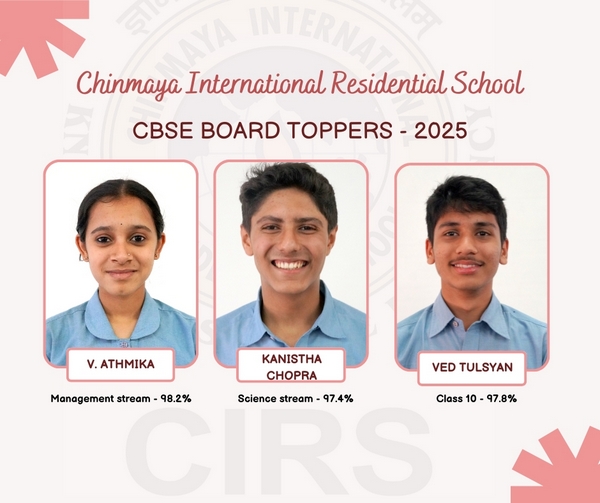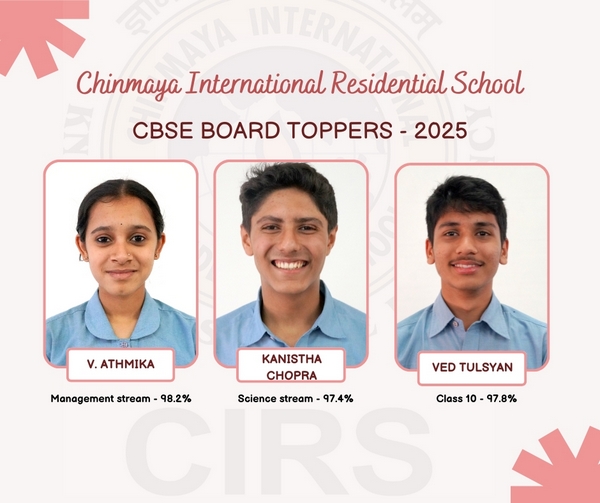Raminder Luther to Join Panel on Tech-Driven Education Reform at Vidya Bharati Event on July 23 – INDIA New England News

Report on the Vidya Bharati Summit for Educational Reform and Sustainable Development
Event Summary
A high-level panel discussion will be held on July 23, 2025, at the Burlington Marriott in Burlington, MA, hosted by Vidya Bharati. The summit will convene leading academics and changemakers to address educational reform in India, with a strategic focus on achieving the United Nations Sustainable Development Goals (SDGs). The core objective is to leverage the expertise of the Indian diaspora and technological innovation to advance educational outcomes, particularly for underserved communities.
Alignment with Sustainable Development Goals (SDGs)
The event’s agenda is fundamentally aligned with several key SDGs, aiming to create a multi-faceted impact on India’s development landscape.
- SDG 4 (Quality Education): The primary focus is to ensure inclusive and equitable quality education and promote lifelong learning opportunities for all. The discussion will explore scalable models, such as the successful Vidyabharati school network, and digital tools to enhance learning quality and accessibility.
- SDG 10 (Reduced Inequalities): By concentrating on bridging educational gaps in rural and low-income communities, the initiative directly targets the reduction of inequalities. A central theme is digital equity, ensuring that technological advancements in education benefit the most marginalized populations.
- SDG 17 (Partnerships for the Goals): The summit embodies the spirit of global partnership by mobilizing the Indian diaspora—a key resource for knowledge transfer, investment, and strategic collaboration—to support national educational goals.
Panel Composition and Contributions to Sustainable Development
Moderator
Satish Jha: A long-time advocate for educational reform and former Editor of the Times of India Group, Mr. Jha will guide the discussion, facilitating a collaborative dialogue aimed at fostering partnerships for sustainable development (SDG 17).
Distinguished Panelists
The panel features experts whose work directly contributes to the SDGs:
- Raminder Luther: As Dean of the Bertolon School of Business at Salem State University, her expertise in financial literacy and education equity will provide critical insights into empowering communities and promoting inclusive economic growth (SDG 8) through quality education (SDG 4). Her long-standing academic leadership underscores a commitment to building strong educational institutions.
- Prof. Ujjayant Chakravorty: An economist from Tufts University specializing in sustainable systems, his contribution will focus on using data-driven policies and resource optimization to build resilient and effective educational infrastructure (SDG 9), ensuring long-term sustainability for educational initiatives.
- Prof. M.S. Vijay Kumar: As Executive Director of J-PAL South Asia and an ed-tech pioneer at MIT, his work with OpenCourseWare and edX exemplifies the use of technology to democratize education. He will address how digital platforms can be scaled to provide quality education and reduce inequalities across India (SDG 4, SDG 10).
Strategic Objectives and Expected Outcomes
The summit aims to produce actionable strategies that align with the 2030 Agenda for Sustainable Development.
Key Discussion Points
- Defining the Diaspora’s Role in Achieving SDG 17: The panel will explore concrete mechanisms for knowledge transfer, investment, and strategic partnerships to accelerate educational reform.
- Showcasing Scalable Solutions for SDG 4: The event will analyze the success of the Vidyabharati school network—which educates 1% of India’s students while securing a majority of top examination ranks—as a replicable model for high-impact, inclusive education.
- Focusing on Digital Equity to Advance SDG 10: The conversation will center on initiatives like “One Tablet: Infinite Futures” to ensure that digital learning tools are accessible to all, thereby closing the educational divide between urban and rural communities.
Event Details
- Date: July 23, 2025
- Time: 5:30 PM to 10:00 PM
- Location: Burlington Marriott, One Burlington Mall Road, Burlington, MA 01803
- Target Audience: Educators, policymakers, members of the Indian diaspora, and media committed to advancing the Sustainable Development Goals through education.
Analysis of SDGs, Targets, and Indicators
1. Which SDGs are addressed or connected to the issues highlighted in the article?
-
SDG 4: Quality Education
The article’s central theme is improving education in India through reform, technology, and equity. It discusses making high-quality education accessible, bridging educational gaps, and empowering communities through learning.
-
SDG 9: Industry, Innovation and Infrastructure
The article heavily emphasizes the role of technology, digital tools, and scalable solutions in education. It highlights initiatives like “OpenCourseWare,” “edX,” and “One Tablet: Infinite Futures” as critical infrastructure for modern learning.
-
SDG 10: Reduced Inequalities
A key focus of the panel is on “education equity” and bridging “educational gaps across underserved communities.” The discussion aims to address disparities faced by rural and low-income populations, ensuring they are not left behind in a digitally connected world.
-
SDG 17: Partnerships for the Goals
The event itself is a multi-stakeholder partnership. The article describes a collaboration between academics, educational organizations (Vidya Bharati), and the Indian diaspora to mobilize “knowledge transfer, investment, and strategic partnerships” for educational reform.
2. What specific targets under those SDGs can be identified based on the article’s content?
-
SDG 4: Quality Education
- Target 4.1: By 2030, ensure that all girls and boys complete free, equitable and quality primary and secondary education. The article supports this by discussing the success of Vidyabharati Schools in providing “high-impact education” and the overall goal to “ensure that every child in India has the opportunity to succeed.”
- Target 4.4: By 2030, substantially increase the number of youth and adults who have relevant skills, including technical and vocational skills, for employment, decent jobs and entrepreneurship. This is addressed through the mention of Raminder Luther’s expertise in “financial literacy,” a key skill for economic empowerment.
- Target 4.5: By 2030, eliminate gender disparities in education and ensure equal access to all levels of education and vocational training for the vulnerable. The article’s focus on “education equity,” “inclusive” education models, and reaching “underserved,” “rural and low-income communities” directly aligns with this target.
-
SDG 9: Industry, Innovation and Infrastructure
- Target 9.c: Significantly increase access to information and communications technology and strive to provide universal and affordable access to the Internet. This is reflected in the discussion about the “transformative power of digital tools,” making “digital learning tools widely accessible,” and the “One Tablet: Infinite Futures” initiative.
-
SDG 10: Reduced Inequalities
- Target 10.2: By 2030, empower and promote the social, economic and political inclusion of all, irrespective of…economic or other status. The article addresses this by aiming to “bridge educational gaps across underserved communities” and using technology to provide equal opportunities to students in “rural and low-income communities.”
-
SDG 17: Partnerships for the Goals
- Target 17.16: Enhance the global partnership for sustainable development, complemented by multi-stakeholder partnerships that mobilize and share knowledge, expertise, technology and financial resources. The event’s structure, which involves “leveraging the Indian diaspora’s expertise,” promoting “knowledge transfer, investment, and strategic partnerships,” and bringing together academics from different universities, is a direct embodiment of this target.
3. Are there any indicators mentioned or implied in the article that can be used to measure progress towards the identified targets?
-
SDG 4: Quality Education
- Indicator for Target 4.1: The article provides a direct performance metric for the Vidyabharati Schools, stating they “consistently securing more than half of the top 10 rankings in state board examinations.” This serves as an indicator of high-quality educational outcomes.
- Indicator for Target 4.5: The article mentions that Vidyabharati Schools educate “approximately 1% of India’s student population.” An implied indicator is the proportion of students from “underserved,” “rural,” and “low-income communities” enrolled in these high-performing schools.
-
SDG 9: Industry, Innovation and Infrastructure
- Indicator for Target 9.c: The initiative “One Tablet: Infinite Futures” implies a clear indicator: the number or percentage of students, particularly in “rural and low-income communities,” who are provided with digital learning devices. The use of “OpenCourseWare and edX” also implies measuring the number of users accessing these platforms.
-
SDG 10: Reduced Inequalities
- Indicator for Target 10.2: Progress can be measured by tracking the reduction in the “educational gaps” between students in urban centers and those in “underserved communities.” This could be measured by comparing examination scores, graduation rates, and access to digital resources.
-
SDG 17: Partnerships for the Goals
- Indicator for Target 17.16: The article implies progress can be measured by the outcomes of the diaspora’s involvement, such as the amount of “investment” mobilized, the number of “strategic partnerships” formed between diaspora members and Indian institutions, and the implementation of “actionable, technology-driven strategies” resulting from this collaboration.
4. Summary Table of SDGs, Targets, and Indicators
| SDGs | Targets | Indicators |
|---|---|---|
| SDG 4: Quality Education |
4.1: Ensure quality primary and secondary education.
4.4: Increase the number of youth and adults with relevant skills (e.g., financial literacy). 4.5: Ensure equal access to education for vulnerable populations. |
Proportion of top rankings in state board examinations (e.g., “more than half of the top 10 rankings”).
Number of students receiving financial literacy training. Proportion of students from “underserved,” “rural,” and “low-income communities” enrolled in quality education programs. |
| SDG 9: Industry, Innovation and Infrastructure | 9.c: Increase access to information and communications technology (ICT). |
Number/percentage of students with access to digital learning tools (e.g., “One Tablet: Infinite Futures”).
Number of users accessing online educational platforms like OpenCourseWare and edX. |
| SDG 10: Reduced Inequalities | 10.2: Promote social and economic inclusion of all. | Reduction in the educational performance gap between students in urban centers and those in “underserved communities.” |
| SDG 17: Partnerships for the Goals | 17.16: Enhance multi-stakeholder partnerships to mobilize and share knowledge, technology, and financial resources. |
Number of “strategic partnerships” formed.
Amount of “investment” mobilized from the diaspora. Number of collaborative projects initiated through “knowledge transfer.” |
Source: indianewengland.com

What is Your Reaction?
 Like
0
Like
0
 Dislike
0
Dislike
0
 Love
0
Love
0
 Funny
0
Funny
0
 Angry
0
Angry
0
 Sad
0
Sad
0
 Wow
0
Wow
0







































































